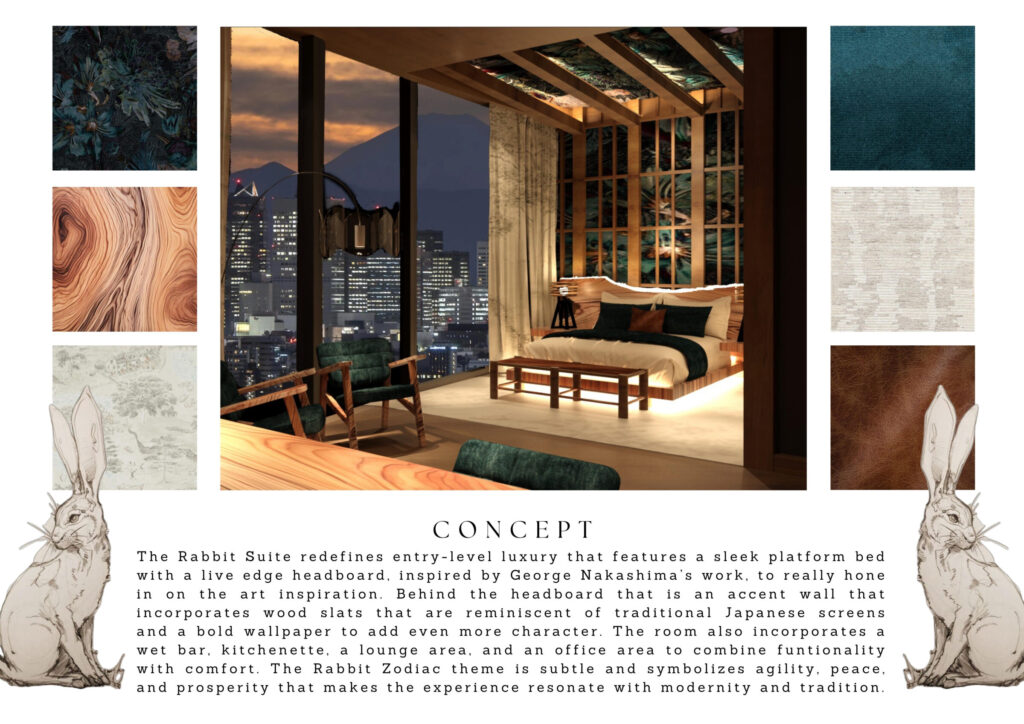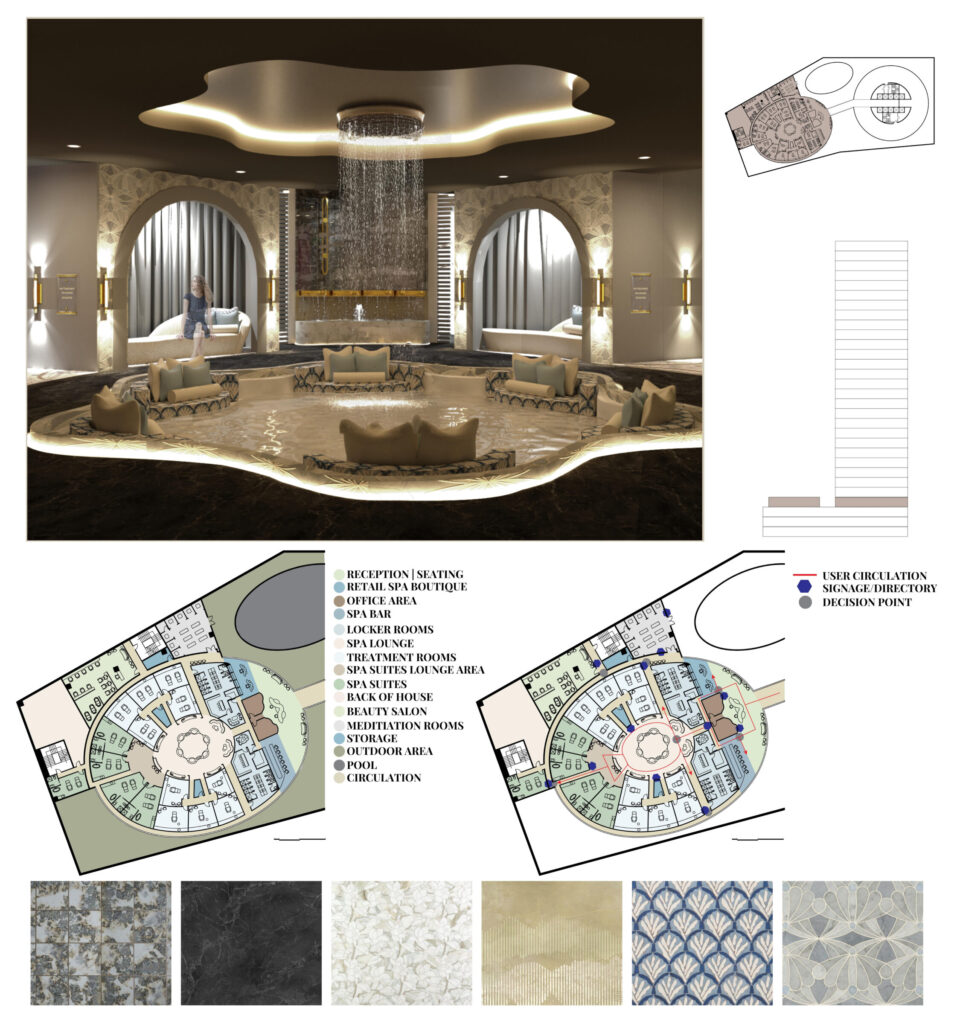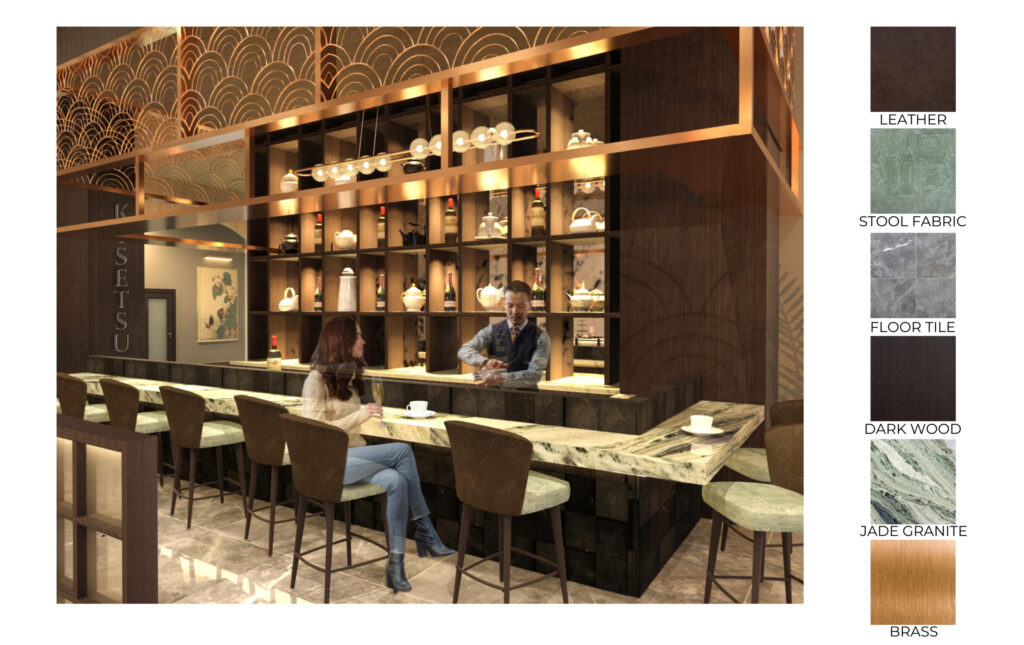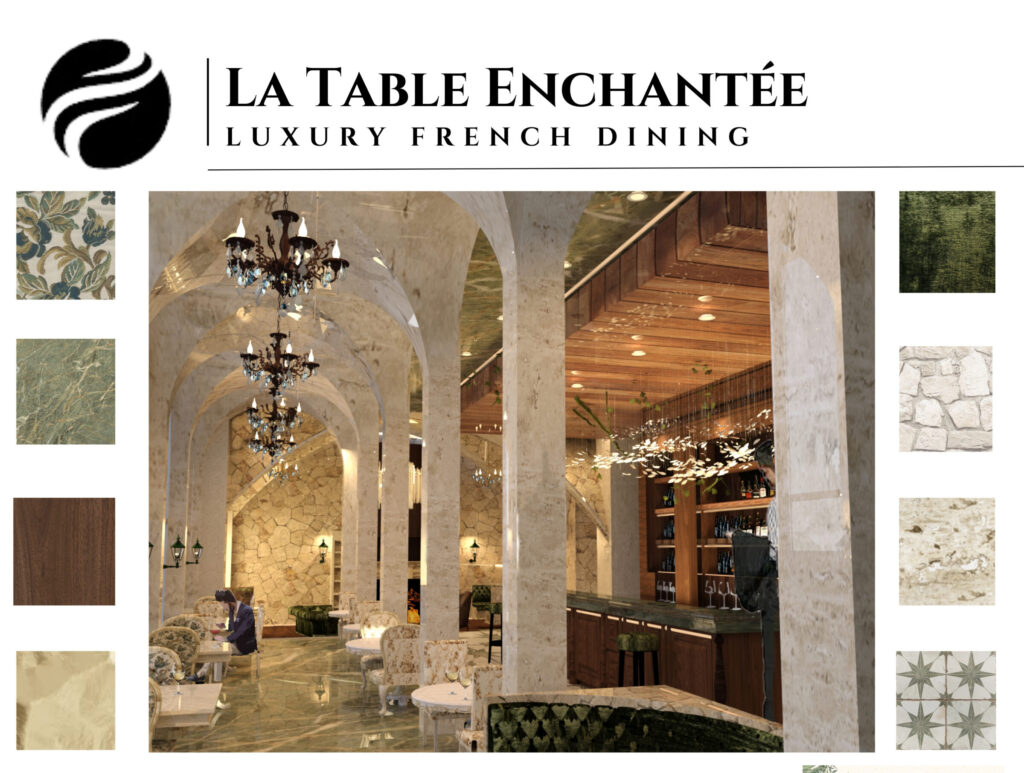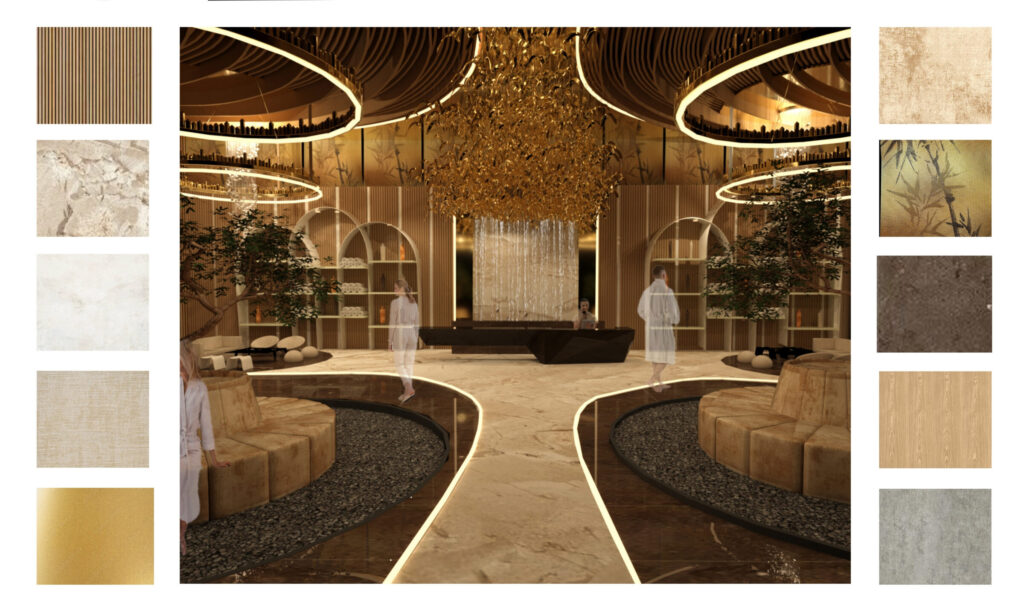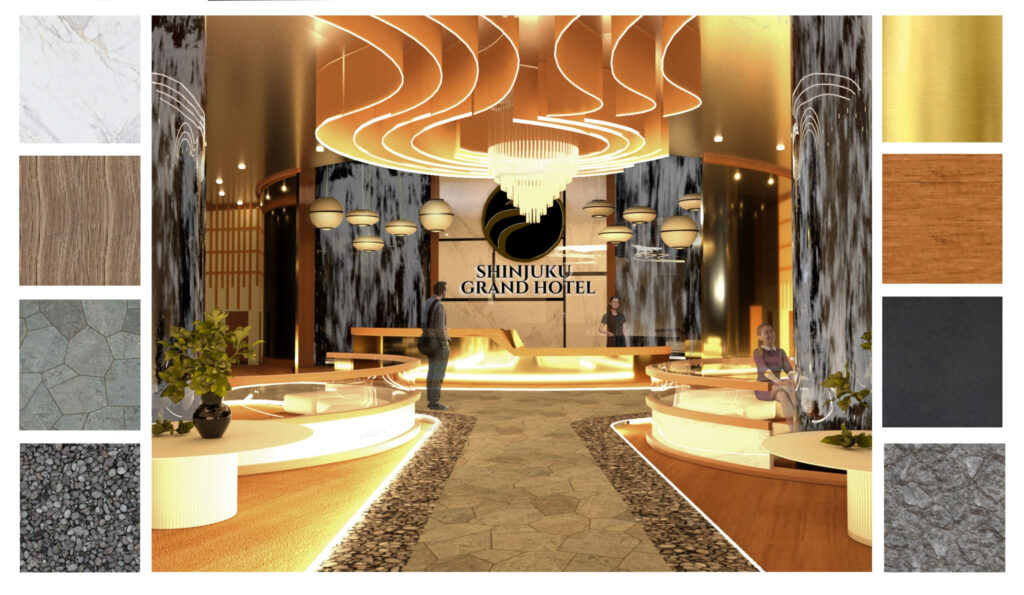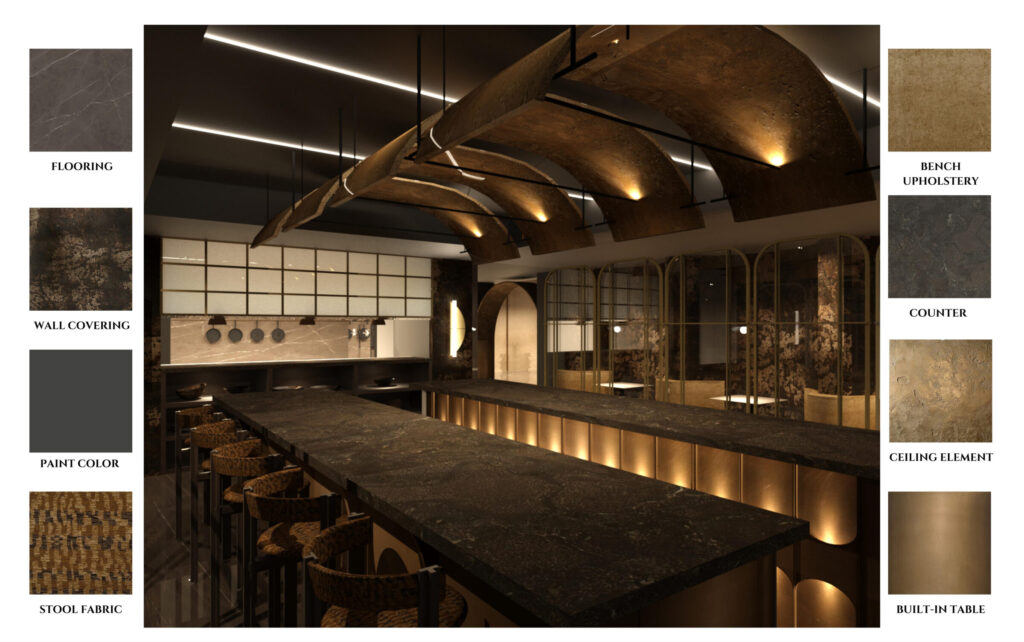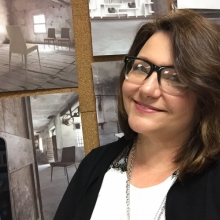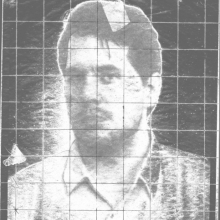Interior Design
The Interior Design program at the Lamar Dodd School of Art supports training in the field of interior design at the undergraduate level. Interior Design is a service profession, dealing largely with people and their needs. The demand for design services has grown rapidly. With that growth has come a wide range of specialties in both residential and commercial design. Most of our graduates are affiliated with architectural and medium to large-scale commercial interior design firms. Others pursue careers in residential design. A significant number seek advanced degrees in architecture, industrial design, or interior design.
Students interested in Interior Design should be design-oriented. They must have the ability to express ideas by free-hand drawing, architectural drafting, computer-aided design (CAD), physical and electronic models, and other graphic media. They must be able to present their ideas both visually and verbally and should be knowledgeable and conversant in historic and contemporary architectural and interior design areas.
Mission Statement
The mission of the Interior Design Program at Lamar Dodd School of Art is to promote art and design as a significant means of inquiry, integral to problem-solving and the production of knowledge; to educate students to be empathetic and engaged citizens and to prepare them for careers as creative professionals; and to address critical issues facing Georgians and the nation through innovative research in art, art education, and design.
Student Portfolio
Interior Design Faculty
Accreditation
Accreditation
The interior design program leading to the Bachelor of Fine Arts, Interior Design, in the Lamar Dodd School of Art, is accredited by the Council for Interior Design Accreditation (CIDA), accredit-id.org; 206 Grandville Avenue, Suite 350, Grand Rapids, MI, 49503.
The CIDA-accredited program prepares students for entry-level interior design practice, for advanced study, and to apply for membership in professional interior design organizations. The Bachelor of Fine Arts granted by the University of Georgia meets the educational requirement for eligibility to sit for the National Council for Interior Design Qualification Examination (NCIDQ Exam). For more information about NCIDQ Exam eligibility visit: https://www.cidq.org/eligibility-requirements.
All potential students should note that graduation from a CIDA-accredited program streamlines the application process for licensing of Interior Designers in the State of Georgia.
The program is also accredited by the National Association of Schools of Art and Design (NASAD).

Lamar Dodd School of Art
Study in the area of interior design is supported through the programming of the School of Art, study abroad, and dedicated computers and facilities. The Interior Design building, Broad Street Studio 2, provides a studio environment that facilitates the design and exploration of the built environment. Learn more about the studio spaces at the Lamar Dodd School of Art here.
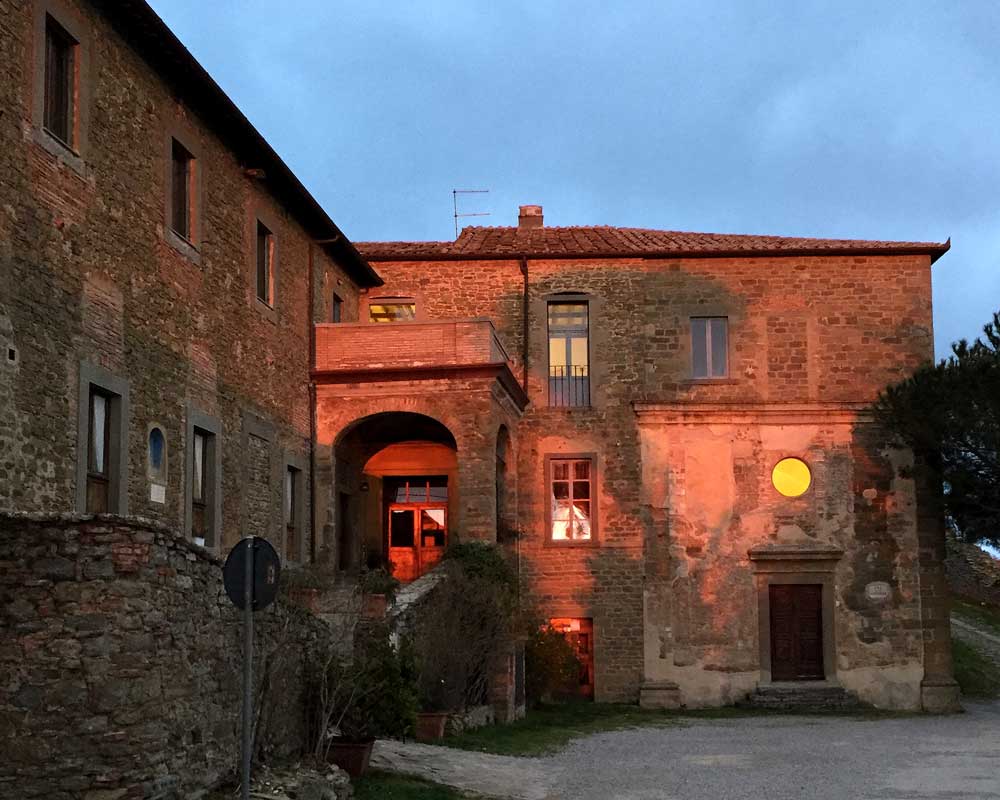
Study Abroad
The UGA Studies Abroad Program in Cortona takes place in the hilltown of Cortona, Italy. While based in Cortona, students begin their experience in Rome or Naples and make field trips to major cities and artistic centers in Italy such as Perugia, Assisi, Siena, Florence, among others. The summer session of Study Abroad in Cortona offers two interior design studio classes. Students are encouraged to take an additional academic course to complete their schedules. Exceptional students may apply for a third studio. Various scholarships are available. Learn more about deadlines and study abroad at Cortona here.
UGA provides instructional labs with computer-aided design (CAD), graphic presentation, and general software. From the second semester of the second year and on through graduation, most studio projects have significant CAD components. There is a very high demand placed on the lab to meet instructional needs. The Interior Design studios lab is available during non-class times for anyone in the School of Art who has appropriate training.
Students are not required to own personal computers; however, most find they benefit from doing so. We strongly recommend that students purchase laptop computers. While they cost more than desktop computers, they have significant advantages. Students can bring laptop computers to work in any studio. They can work both on and off campus, in and out of town.
WINDOWS OR MAC?
The computer-aided design (CAD) software used in Interior Design is based on the Windows operating system. It can run on Apple laptops, if and only if the computer has both Apple and Windows operating systems installed. Critical CAD software that you must use within the Interior Design program is not available for the Apple operating system.
See Autodesk Revit Software Information page below to determine system requirements.
Learn more about the profession of Interior Design
Georgia State Board of Architects Licensing of Interior Designers Application requirements prefers a degree from a Council-accredited program and passing the NCIDQ Exam. The following websites can help you learn more about the interior design profession, accreditation of interior design programs, and the qualifications for licensing of interior designers in the State of Georgia:
Undergraduate Interior Design
Students entering this field must be interested in, and aware of, the interior and exterior environment. They must be dedicated to planning the most functional and aesthetic interior spaces for all human purposes. They must have self-confidence, be self-disciplined, inventive, and able to work under pressure, and meet deadlines.
Students are accepted into the program after completing the School of Art Foundation Studio and Art History Program, two preliminary Interior Design courses, and the Interior Design Progression Review. The latter could include a portfolio review, the completion of a weekend-long design project, and/or a review of academic performance. The two preliminary Interior Design courses and Interior Design Progression Review are offered each fall semester. During the past twenty years, over 99% of all students accepted into the program have graduated in a timely fashion.
Students anticipating transferring to the University of Georgia should contact the Interior Design Area Chair or the School of Art Advising Office as early in their academic careers as possible.
Retention Rates
Like all Interior Design programs, the curriculum has numerous prerequisite and co-requisite classes. These are carefully crafted in an interdependent sequence of courses that must be taken in chronological order. The School of Art Studio Art Core program takes two semesters to complete. The Interior Design sequence takes six semesters. Students who begin the program within their first year at the University of Georgia overwhelmingly complete their degrees within four years. Transfer students may speak with the interior design academic advisor to determine which credits may transfer to support a timely completion of the degree.
- 98% of the upper-division students returned fall 2024, putting attrition at 0%.
- 100% of the second-year students who went through the Interior Design Progression Review at the end of fall semester returned for spring semester.
- 67% of the third-year students took studio classes in Athens in the spring. The remaining 33% of the third-year students took studio classes in Cortona, Italy, during the summer semester.
- 100% of the fourth-year students graduated.
- 100% of the upper-division students returned fall 2022, putting attrition at 0%.
- 100% of the second-year students who went through the Interior Design Progression Review at the end of fall semester returned for spring semester.
- 67% of the third-year students took studio classes in Athens in the spring. The remaining 33% of the third-year students took studio classes in Cortona, Italy, during the summer semester.
- 100% of the fourth-year students graduated.
- 100% of the upper-division students returned fall 2022, putting attrition at 0%.
- 100% of the second-year students who went through the Interior Design Progression Review at the end of fall semester returned for spring semester.
- 67% of the third-year students took studio classes in Athens in the spring. The remaining 33% of the third-year students took studio classes in Cortona, Italy, during the summer semester.
- 100% of the fourth-year students graduated.
- 100% of the upper-division students returned fall 2019, putting attrition at 0%.
- 100% of the second-year students who went through the Interior Design Progression Review at the end of fall semester returned for spring semester.
- 67% of the third-year students took studio classes in Athens in the spring. The remaining 33% of the third-year students took studio classes in Cortona, Italy, during the summer semester.
- 97% of the fourth-year students graduated.
- 100% of the upper-division students returned fall 2019, putting attrition at 0%.
- 100% of the second-year students who went through the Interior Design Progression Review at the end of fall semester returned for spring semester.
- 67% of the third-year students took studio classes in Athens in the spring. The remaining 33% of the third-year students took studio classes in Cortona, Italy, during the summer semester.
- 94% of the fourth-year students graduated.
- 100% of the upper-division students returned fall 2019, putting attrition at 0%.
- 100% of the second-year students who went through the Interior Design Progression Review at the end of fall semester returned for spring semester.
- 67% of the third-year students took studio classes in Athens in the spring. The remaining 33% of the third-year students took studio classes in Cortona, Italy, during the summer semester.
- 100% of the fourth-year students graduated.
- 100% of the upper-division students returned fall 2018, putting attrition at 0%.
- 60% of the second-year students who went through the Interior Design Progression Review at the end of fall semester returned for spring semester.
- 54% of the third-year students took studio classes in Athens in the spring. The remaining 46% of the third-year students took studio classes in Cortona, Italy, during the summer semester.
- 100% of the fourth-year students graduated.
Graduation Rates
Students who begin the program within their first year at the University of Georgia overwhelmingly complete their degrees within four years. Transfer students may speak with the interior design academic advisor to determine which credits may transfer to support a timely completion of the degree.
- 75% of the graduates completed the program in 4 years
- 25% of the graduates completed the program in 5 years
- 0% of the graduates completed the program in 6 years
- 74% of the graduates completed the program in 4 years
- 26% of the graduates completed the program in 5 years
- 0% of the graduates completed the program in 6 years
- 71% of the graduates completed the program in 4 years
- 29% of the graduates completed the program in 5 years
- 0% of the graduates completed the program in 6 years
- 61% of the graduates completed the program in 4 years
- 33% of the graduates completed the program in 5 years
- 6% of the graduates completed the program in 6 years
- 79% of the graduates completed the program in 4 years
- 18% of the graduates completed the program in 5 years
- 3% of the graduates completed the program in 6 years
- 61% of the graduates completed the program in 4 years
- 39% of the graduates completed the program in 5 years
- 0% of the graduates completed the program in 6 years
- 76% of the graduates completed the program in 4 years
- 24% of the graduates completed the program in 5 years
- 0 % of the graduates completed the program in 6 years
Acceptance into Graduate Programs
Recent graduates from the Lamar Dodd School of Art Interior Design program have been accepted into a variety of graduate programs either immediately after completing their undergraduate studies or after gaining one or more years of professional interior design experience. The following list represents the diversity and distribution of these programs:
- Arizona State University
- Clemson University
- Georgia Technological University
- North Carolina State University
- University of Cincinnati
- University of Tennessee
- University of Washington
- Virginia Technological University
- Georgia Institute of Technology
Career Placements
96% of our May 2025 graduates were employed upon by December 2025. 4 students pursued graduate degrees in fall 2025.
97% percent of our May 2024 graduates were employed upon by December 2024. 2 students pursued graduate degrees in fall 2024.
94% percent of our May 2023 graduates were employed upon by December 2023. No students pursued graduate degrees in fall 2023.
97% percent of our May 2022 graduates were employed upon by December 2022. No students pursued graduate degrees in fall 2022.
94% percent of our May 2021 graduates were employed upon by December 2021. 2 students pursued graduate degrees in fall 2021.
40% percent of our May 2020 graduates were employed upon by December 2020. No students pursued graduate degrees in fall 2020.
95% percent of our May 2019 graduates were employed upon by December 2019. No students pursued graduate degrees in fall 2019.
Graduates are pursuing active careers designing projects such as residences; offices; restaurants, hotels, spas, and resorts; health-related facilities; retail spaces; exhibits; places of worship; schools and college campuses; museums; theaters; government facilities; transportation terminals; and even the interiors of trains, ships, and airplanes.
Recent graduates have begun careers as both residential and non-residential interior designers, mostly in hospitality and architecture design firms.
- 2KM Architects, Inc., Augusta, GA
- Alicia Mooney Interiors, Atlanta, GA
- Arcollab, Athens, GA
- American Express, Atlanta, GA
- Aspen Leaf Kitchens, Denver, CO
- August Avery, Atlanta, GA
- Barrie Benson Interior Design, Charlotte, NC
- Barrie Benson Interior Design, Columbus, GA
- Blackdog Studio, Atlanta, GA
- Bliss Home, Nashville, TN
- BLUR Workshop, Atlanta, GA
- BoggsVickers Architects, LLC, Atlanta, GA
- Bon Chérie Designs, LLC, Atlanta, GA
- Bork Architectural Design, Athens, GA
- Bradley Interiors, Inc., Atlanta, GA
- Bradley-Blewster & Associates, Chicago, Illinois
- Bungalow LLC, Washington, DC
- C + TC Design Studio, Atlanta, GA
- Carl Vinson Institute of Government, UGA, Athens, GA
- Cassidy Turley, Atlanta, GA
- CBRE Real Estate Ventures, Atlanta, GA
- CDH Partners, Inc., Marietta, GA
- Chick-fil-A, Inc., Atlanta, GA
- Clausen Chewning Interior Design, Atlanta, GA
- Complete Bathrooms, New Zealand
- Cooper Carry, Atlanta, GA
- Corgan Inc., Dallas, TX
- Corgan, Atlanta, GA
- CSE, Atlanta, GA
- Cullen and Company, Athens, GA
- D12 Interiors, Athens, GA
- DAAD Architecture, Nashville, TN
- DAAD Architecture, Nashville, TN
- Dalton Carpet One, Athens, GA
- Design Continuum Inc., Atlanta, GA
- designproject, LLC, Chicago, IL
- Dickinson Architects, Augusta, GA
- Domino Magazine | Market Editor, New York, NY
- Drew McGukin Interior Design, New York, NY
- Dwell Design Studio, Atlanta, GA
- E+E Architecture, Athens, GA
- E+E Architecture, Lawrenceville, GA
- E+E Architecture, Tulsa, OK
- Ellis Design Group, Athens, GA
- F. Schumacher & Co., Atlanta, GA
- Ferry, Hayes and Allen Designers, Inc., Atlanta, GA
- Floor and Décor, Savannah, GA
- Focus Design Interiors, Atlanta, GA
- Focus Design Interiors, Inc., Atlanta, GA
- Geiger International, New York, NY
- Gensler, Atlanta, GA / Charlotte, NC / New York, NY
- George P. Johnson, Torrance, CA
- Glazer Design & Construction, Athens, GA
- Good Sense and Company, Brooklyn, NY
- Graham Field, Atlanta, GA
- Green Living Designs, Atlanta, GA
- Gresham, Smith and Partners, Nashville, TN
- Gulfstream Aerospace, Savannah, GA
- Gulfstream, Savannah, GA
- Health Facilities Group, Tulsa, OK
- Hendrick, Inc., Atlanta, GA / Jacksonville, FL
- Hirsch Bedner Associates, Atlanta, GA / Santa Monica, CA
- HLG Studio Interiors, Atlanta, GA
- Humanscale, Atlanta, GA
- Italo Ceramica, Washington, DC
- Jacobs Engineering, Atlanta, GA
- Jacobs, Gainesville, GA
- Jenkins Interior, Dallas, Texas
- Johnson Studio @ Cooper Carry, Atlanta, GA
- Jonas Workroom, New York, NY
- KDS (Koncept Design Studio), Atlanta, GA
- Kemp’s Dalton West Flooring, Newnan, GA
- KMH Interiors, Atlanta, GA
- Knickerbocker Group, Portland, ME
- Koncept Design Studio, Atlanta, GA
- Kristin Butler Design, Athens, GA
- Kroft + Associates ID, Kennesaw, GA
- L&M Design Build Furnish, Auburn, AL
- LeVino-Jones Medical Interiors, Athens, GA
- Lindsey Lane Design, LLC, New York, NY
- Little Diversified Architectural Consulting, Charlotte, NC
- Lord Aeck Sargent Architects, Atlanta, GA
- Lotan Center for Creative Ecology, Chicago, IL
- Lyman Davidson Dooley, Marietta, GA
- MARTIN BRUDNIZKI DESIGN STUDIO LIMITED, New York
- May Architecture + Interiors, Atlanta, GA
- Mcgaritys Business Products, Gainesville, GA
- Miller Architecture and Planning, Atlanta, GA
- MSTSD Architects, Atlanta, GA
- Murphy-Meyers Interiors, Atlanta, GA
- Nelson, Dallas, TX (4 people)
- Nelson Worldwide, Atlanta, GA
- Nitterhouse Masonry Products, LLC., Washington, DC
- Office Creations, Inc., Atlanta, GA
- Orvis Company, Manchester Center, VT
- Peacock Partnership, Atlanta, GA
- Perkins and Will, Atlanta, GA / Chicago, Illinois
- PFVS Interiors, Atlanta, GA
- Pierce & Co, Nashville, TN
- Pineapple House Interior Design, Atlanta, GA
- Plexus R+D (Research & Design), Athens, GA
- Preston Partnership, Atlanta, GA
- Providence Interiors, Nashville, TN
- RD Jones + Associates, Baltimore, MD
- Red Door Design Studio, Athens, GA
- Rule Joy Trammell + Rubio, Atlanta, GA
- Salas O’Brien, IIDA, Seattle, WA
- Sasaki, Boston, MA
- Shop Design, Inc., Atlanta, GA
- Sims Patrick Studio, Inc., Atlanta, GA
- Smallwood, Atlanta, GA
- Smith Group Architects / Planners, Detroit, MI
- Steelcare, Atlanta, GA
- Streetsense Real Estate, Bethesda, MD / Washinton, DC
- Studio SOGO, Atlanta, GA
- Suyama Peterson Deguchi Architects, Seattle, WA
- The Design Atelier, Inc., Atlanta, GA
- THW Design, Atlanta, GA
- Tory Burch, New York
- Traci Rhoads Interiors, LLC, Atlanta, GA
- Universal Studios Creative, Kissimmee, FL
- VeenendaalCave, Inc., Atlanta, GA
- Wakefield, Beasley & Associates, Atlanta, GA
- Wendover Art Group, Atlanta, GA
- Whitehall Interiors, New York, NY
- Wolf Popper LLP, Atlanta, GA
Courses for Non-Majors
The Interior Design area invites students from other majors into the following courses on a space-available basis. Some restrictions apply as noted below. Please e–mail the ID Area Chair for registration clearance, as needed.
ARID 2210 Concepts in Design
ARID 3210 Design History I
ARID 3220 Design History II
ARID 3340 Furniture Design
ARID 4410/6410 Time-based Media and Design
ARID 2210 Concepts in Design
Techniques for developing ideas and advancing creative and problem-solving skills while designing three-dimensional spaces. Taught in the context of professional practice in interior design and related fields.
ARID 3210 Design History I
A historical survey of architecture and concepts of interior space, furniture, and allied crafts as a background for contemporary design.
NOTE: Course does NOT meet Art History elective requirements for non-ID students.
ARID 3220 Design History II
Decorative arts of Europe and America beginning with the Arts and Crafts Movement of the nineteenth century and continuing through the twentieth century.
NOTE: Course does NOT meet Art History elective requirements for non-ID students.
ARID 3340 Furniture Design
Cabinetry and furniture design, including construction methods, drawings, and design presentation.
NOTE 1: Student must demonstrate previous drafting or CAD experience to qualify.
NOTE 2: ARST 1080 required.
ARID 4410/6410 Time-Based Media and Design
Time-based media as tool and catalyst for designing objects and/or spaces. Use of walkthroughs, fly-arounds, animations, and renderings in ideation, development, and presentation processes. Employs multiple CAD, drawing, rendering, photo, and/or video software programs.
Last updated: October 10, 2025

